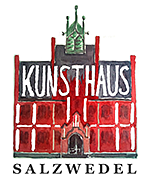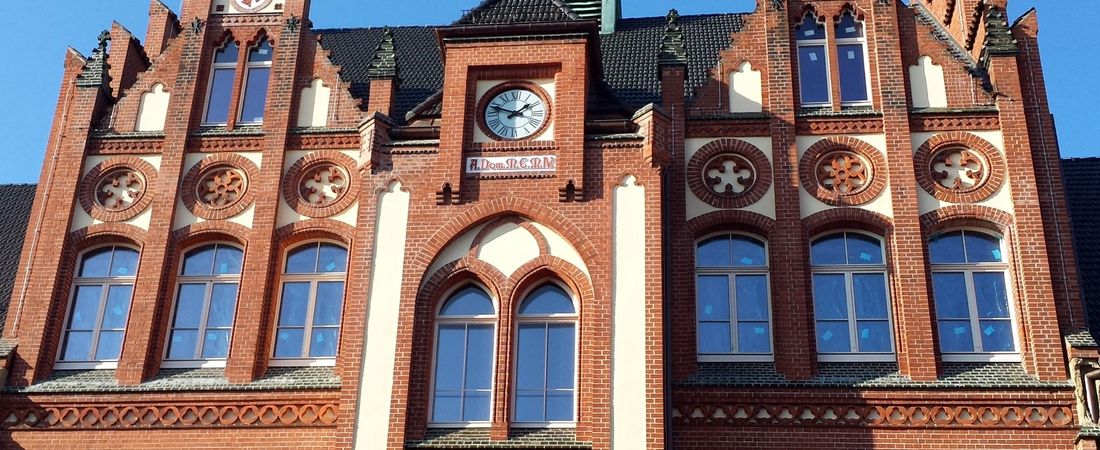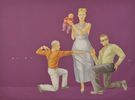Special Exhibitions
Every year, the Kunsthaus team is preparing approx. three special exhibitions for you. At present, we can offer you the following information about the intriguing upcoming exhibitions:
>>> "Belle Beauty" - Li Loebell, Relief | Sibylle Hauswaldt, Paintings | Claudia Hoffmann, Sculpture
The works of three female artists come together in the exhibition "Belle Beauty", which can be seen at Kunsthaus Salzwedel from April 12 to June 2 this year. The starting point for this feminine-artistic dialog are the relief works by former Bauhaus student Li Loebell (1904-1995), which were first shown at the Waldemarturm/Dannenberg Museum in 2020. Sibylle Hauswaldt and Claudia Hoffmann juxtapose this discovery of historical positions with their own modern work motifs. A field of tension is deliberately created between Li Loebell's depictions of the Madonna created over 50 years ago, Sibylle Hauswaldt's modern, color-intensive, expressive figurative paintings and Claudia Hoffmann's clearly geometrically structured sculptures. And as a matter of course, an examination of images of women and roles, women in art right up to the Bauhaus, comes to the fore. For centuries, women as artists hardly played a role in the public consciousness. Today, however, they are making their mark. Despite all the individual and media differences, this exhibition provides an interesting overview of the historical and current state of female artist identity: an exchange that is not stimulated by similarities, but above all by differences and is well worth seeing. Li Loebell (1904 - 1995), despite studying at the Bauhaus from 1920 - 1925 with Johannes Itten, Paul Klee and Joseph Albers, seems to have "fallen out of time" almost without a trace in her works, despite her talent and independent visions of the struggle for existence and family life. Loebell's strangely "housed" figurines, with their extremely experimental and pop-like use of materials for the first half of the last century, are definitely of interest to us. Speechless female figures in two-dimensional cubist reduction reach into empty spaces with little nails, seemingly classical mother-child constellations surprise us with an unholy wire or crown cap nimbus and, despite their flattened scrap materiality, refer to transcendence. In Loebell's hands, a filigree alliance of talmi, mouse skulls and everyday relics succeeds. Her figures are heterogeneous women in pain, Madonnas or queens. Fracture, perfection and ideal are omnipresent and make Loebell's works timeless. Sibylle Hauswaldt studied under the former Bauhaus student Thyra Hartmann, among others. Decisive features of her paintings are combinations of figurative and abstract elements that are conceptually cubist in character. The combination of different stylistic concepts, the carefully balanced color palette and meticulous technical implementation also point to a proximity to the "Neune Leipziger Schule". For, although the pictures are largely formulated in a figurative manner, the core that holds them together remains abstract. Automata dolls, bulbous heads, models or protective icons - brightly colored female protagonists struggle for self-empowerment, against heteronomy. Familiar images of the Madonna, such as those by Piero della Francesca or Botticelli, often provide a traditional, supple template for painterly investigation and intervention. Hauswaldt prefers to use this historically known repertoire of female body language, formulas of grace and helplessness. However, there is no sense of disinterested pleasure. Hauswaldt's pictures show a multifaceted female history with all its cultural violations, told in enigmatically surreal spots. Claudia Hoffmann does not want to use illustrative themes in her art. Despite this, her clearly geometrically structured sculptures appear very feminine and determined. Hoffmann's works are based on aesthetic formal elements taken from a direct observation of nature with tendrils, blossoms and foliage. This approach is in the best Bauhaus tradition. This results in basic vegetative elements which, like staggered building blocks, vary by means of sequencing or stacking and form a harmonious and complex overall structure. This results in new spaces, movements and haptic qualities. "On Top", "Care" or "White Sculpture" formally follow a spherical or egg shape. Tension or dynamics then develop from the respective dissected or layered details. The condensed, logically structured subject also remains consistent in terms of color in the basic tones of black and white or in a material tone. Despite the "hard" materials - concrete, wood, metal - Hoffmann's sculptures appear surprisingly soft, flowing and feminine. Opening hours Tue - Sun, 2 - 5 pm Admission adults 4 €, reduced 3 €. Free admission for children and young people up to 14 years. Text: Sibylle Hauswaldt / Anne Schliephake









